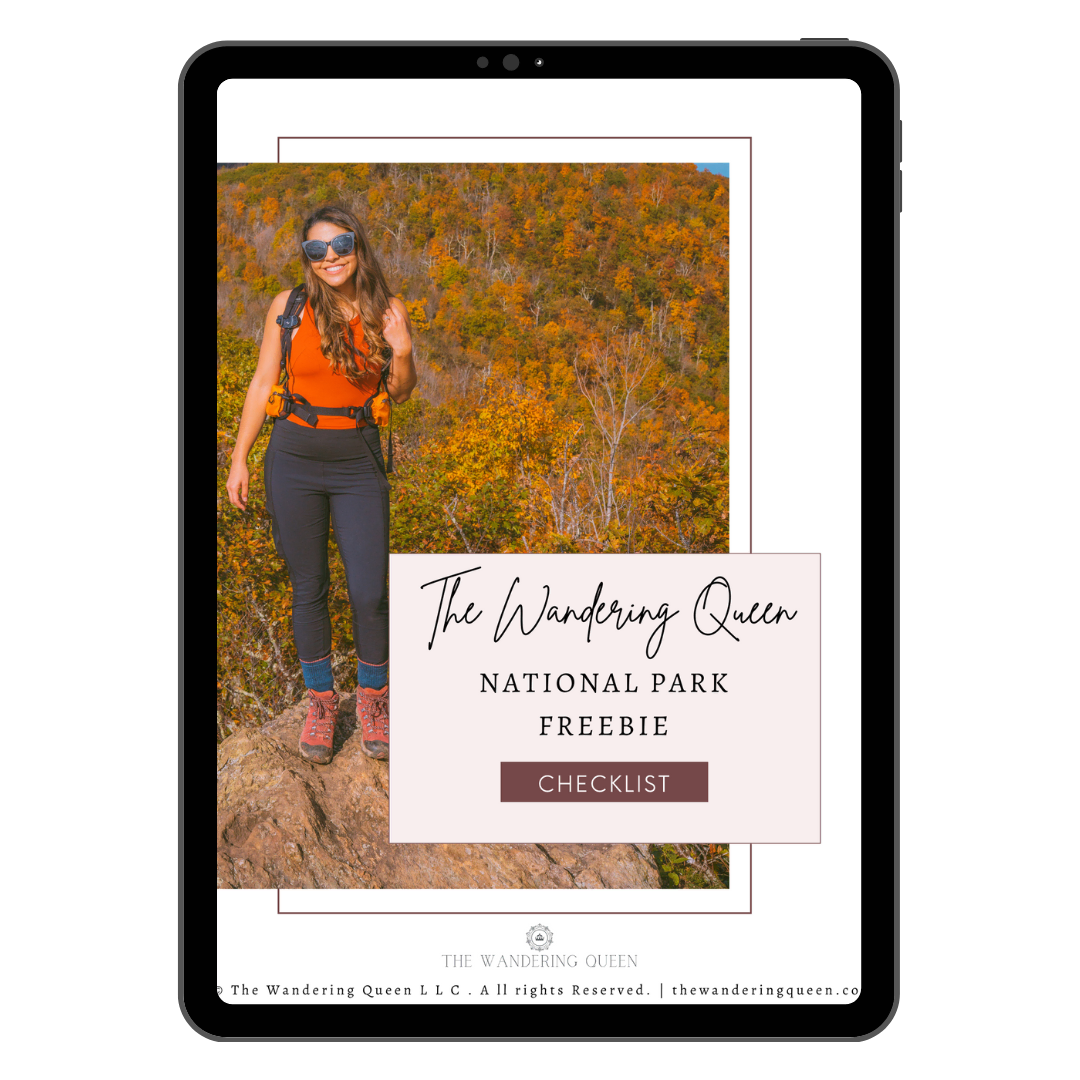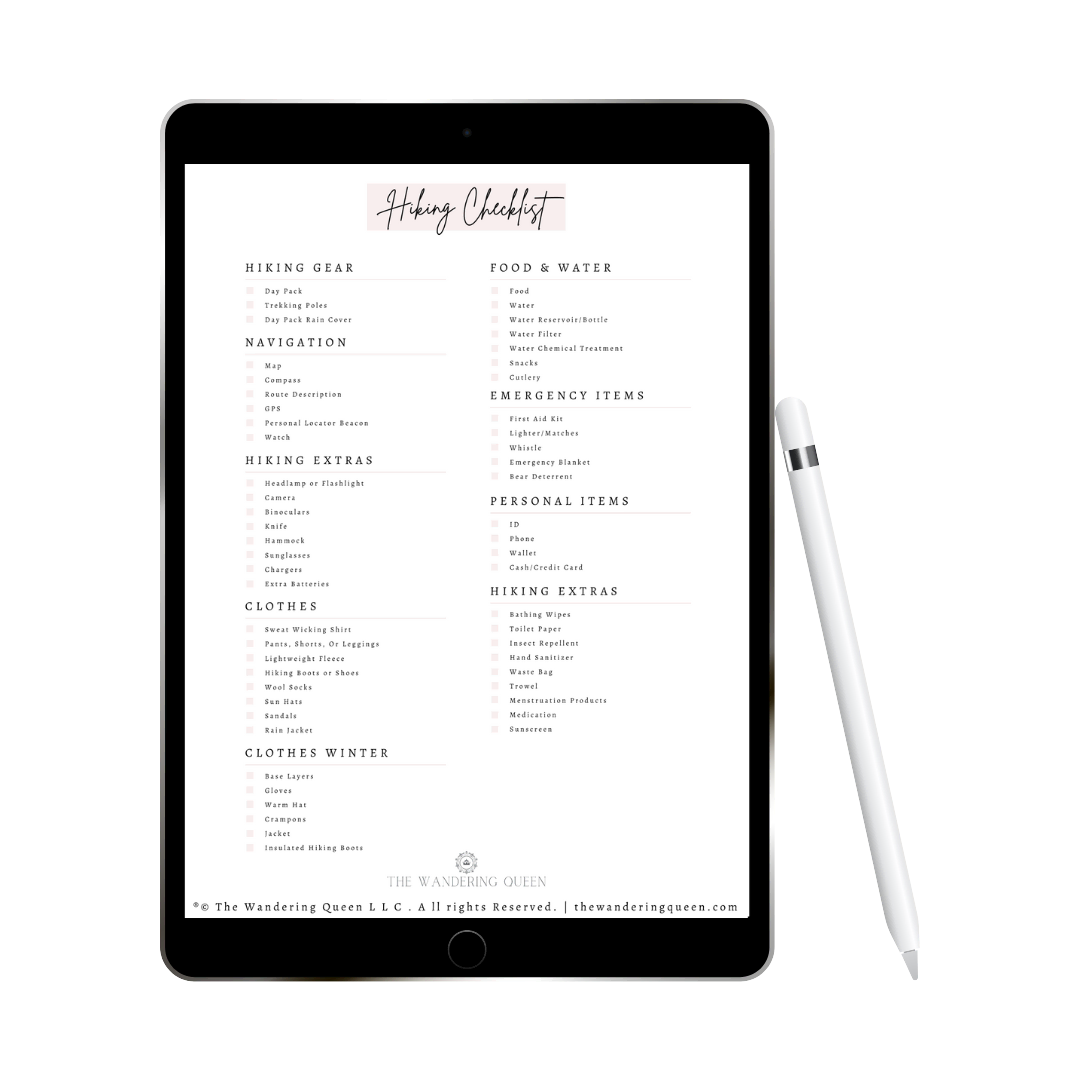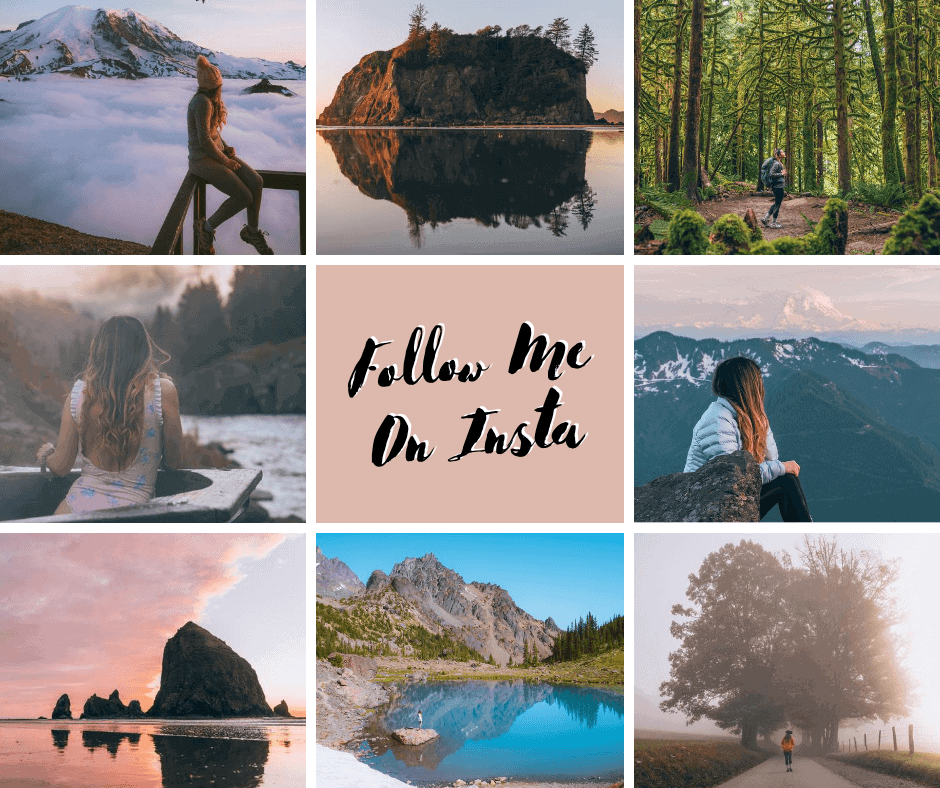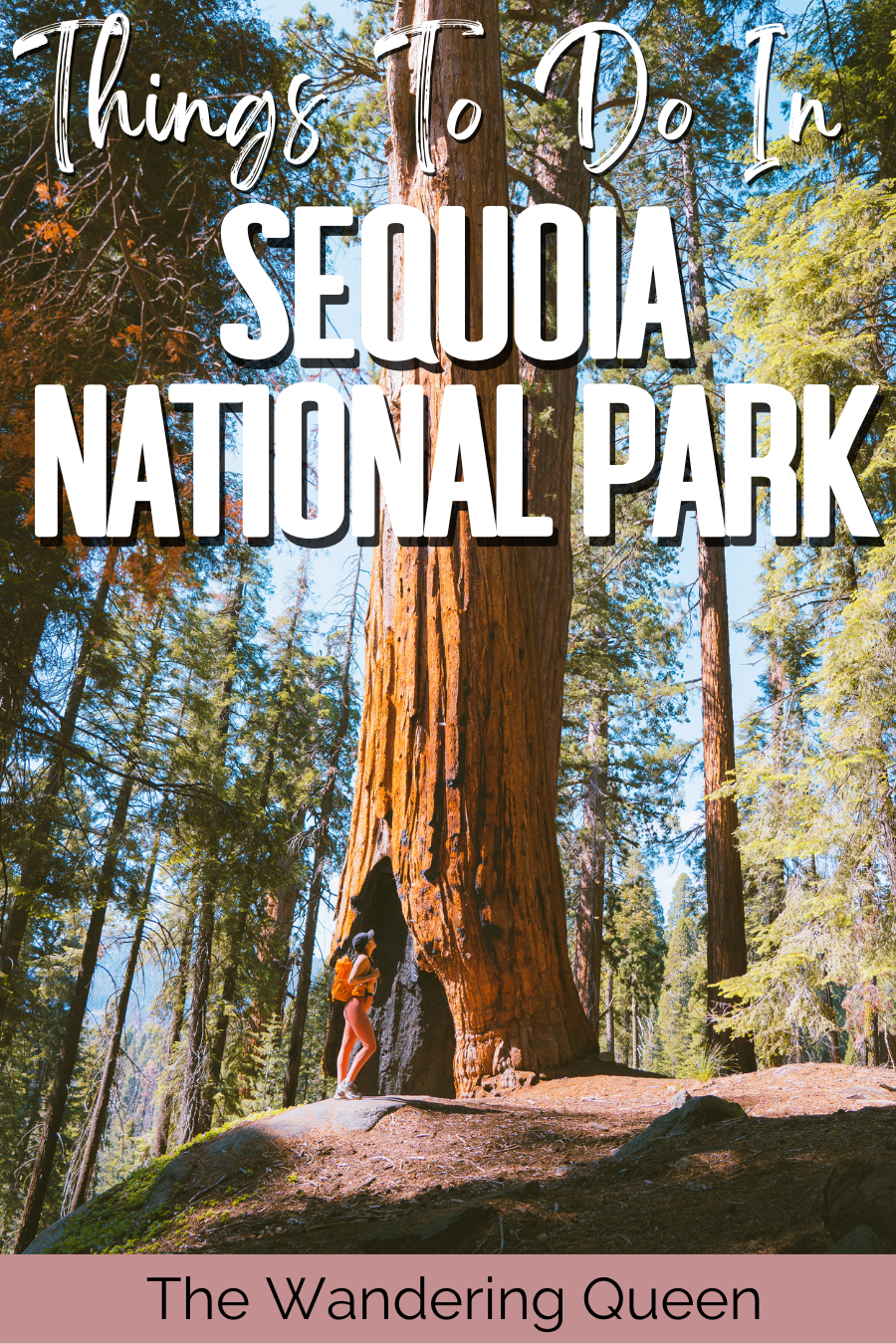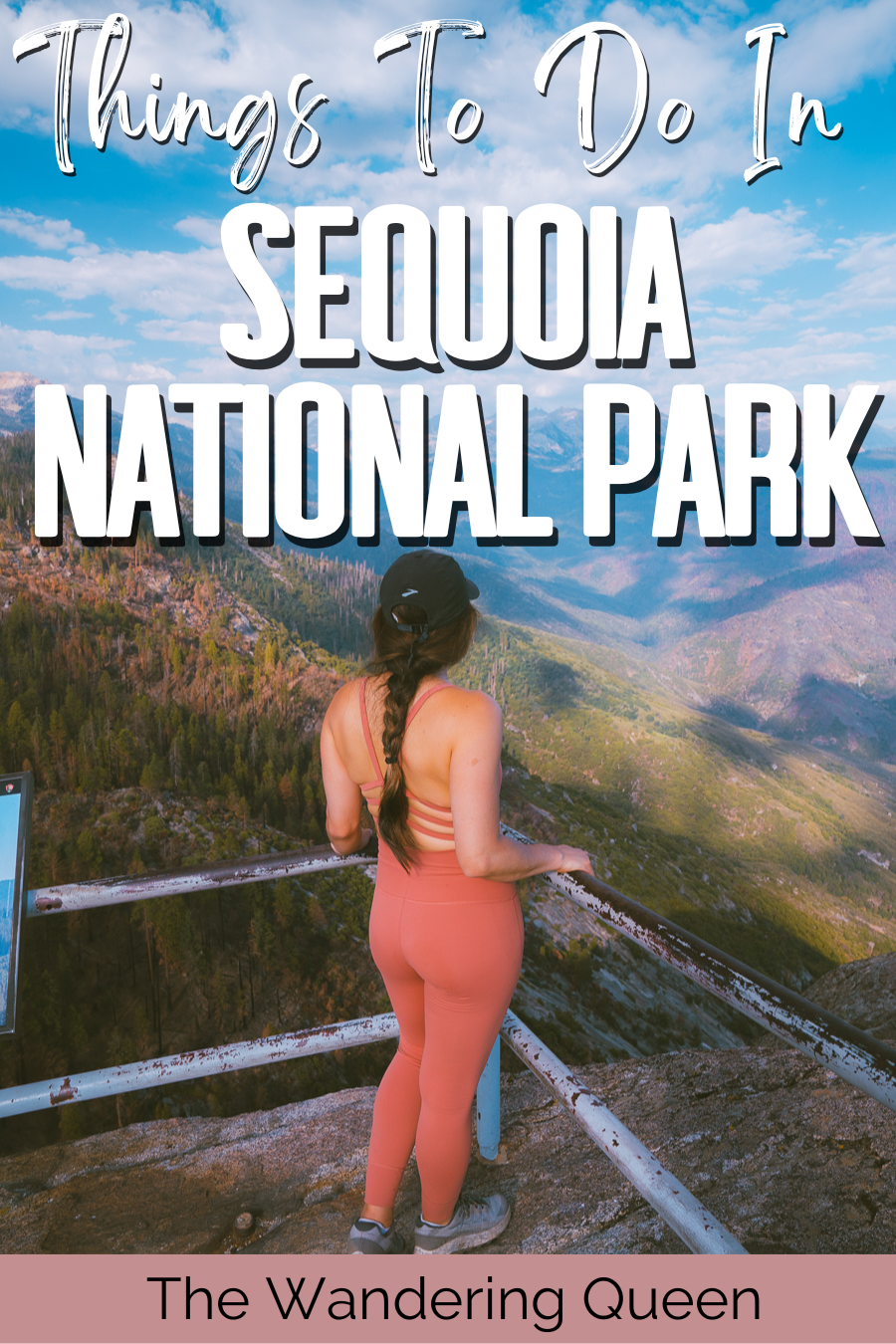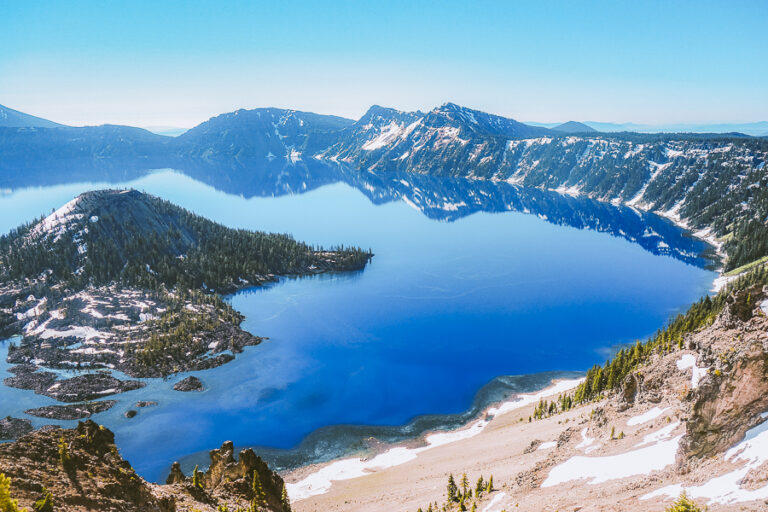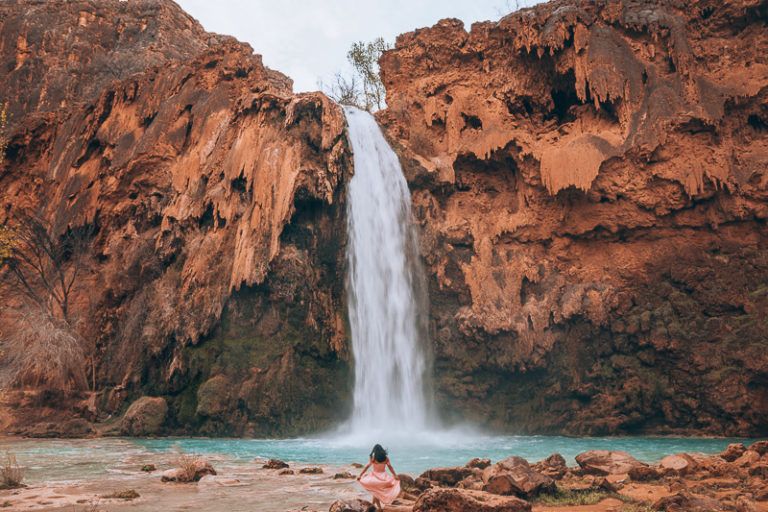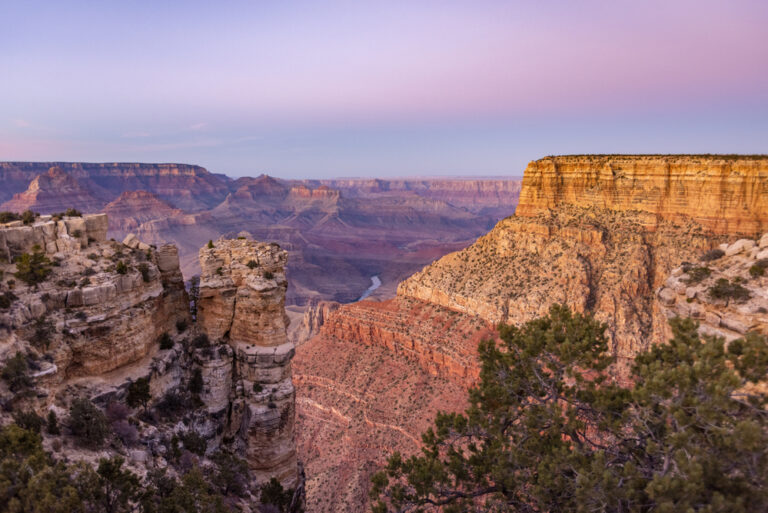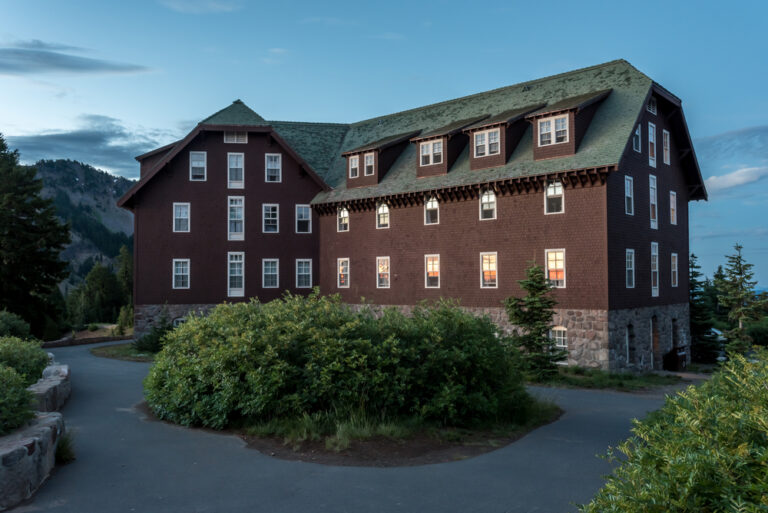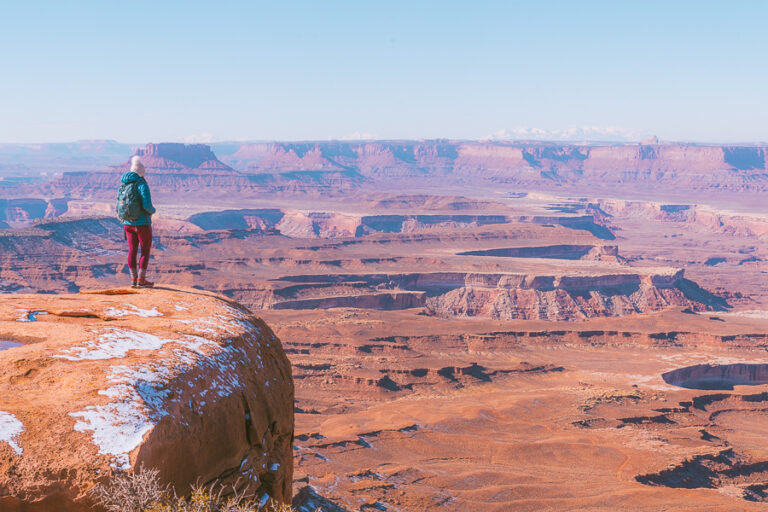Things To Do in Sequoia National Park | 16 Must-See Attractions
If you’re planning a visit to the Golden State, you’re likely looking for the best things to do in Sequoia National Park. This park sees over a million visitors yearly, all eager to marvel at its majestic giants, the sequoia trees.
Nestled in the southern end of the Sierra Nevada, this park is often referred to as the land of giants for its towering trees. These trees will make you feel absolutely miniature and are a must-see attraction on any California bucket list.
Visiting this park and the neighboring Kings Canyon is one of the best activities in Visalia, California. Besides the colossal trees, Sequoia National Park has striking waterfalls, plenty of scenic hikes, and viewpoints that could compete with the top photography spots in Yosemite.
So if you’re looking for things to do, Sequoia National Park won’t disappoint. Let’s get exploring!
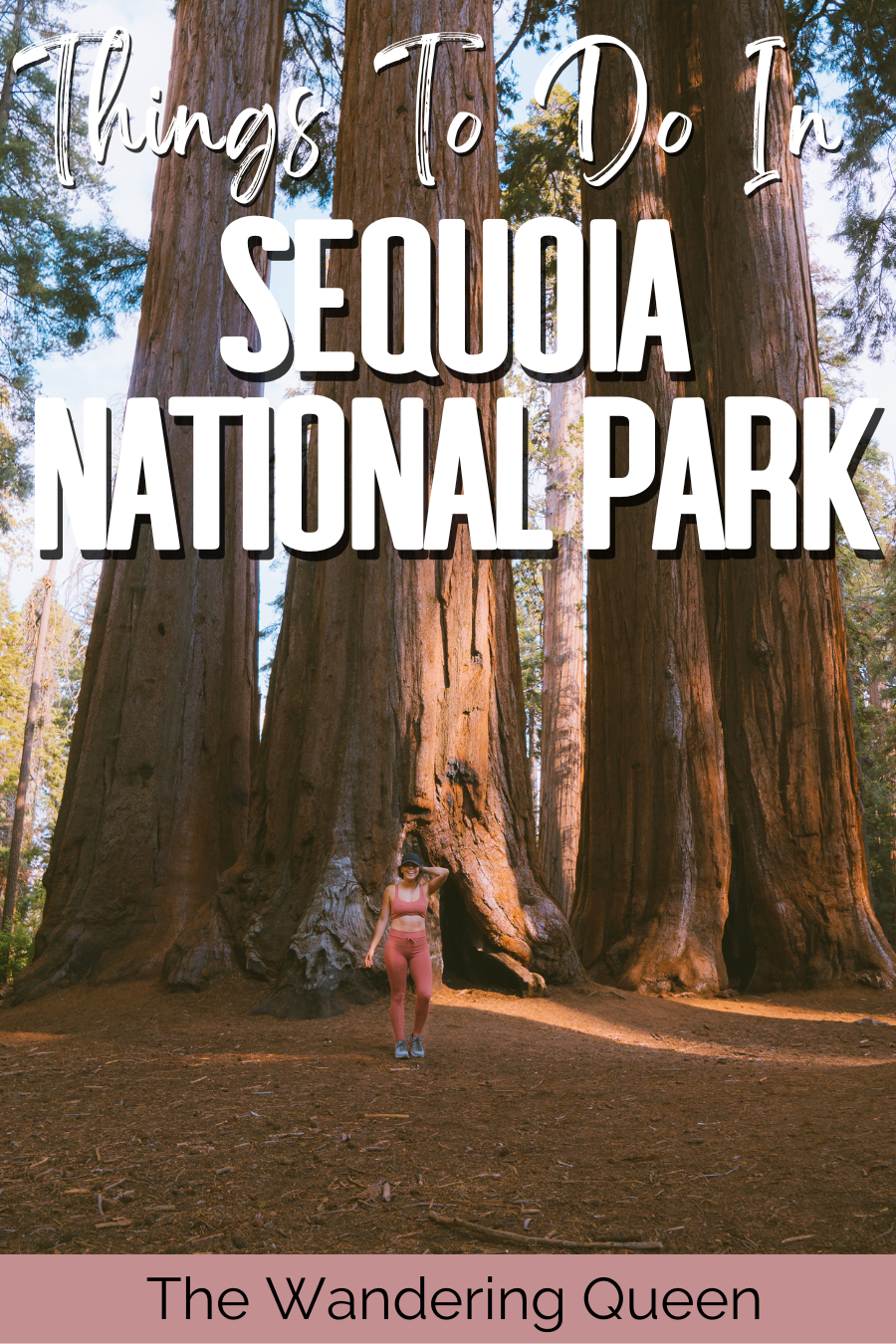
Disclosure: This post contains affiliate links. If you click one of them, I may receive a small commission (for which I am very grateful for) at no extra cost to you.
SEQUOIA National Park
Related Posts
Things To Pack When Visiting Sequoia National Park
- Sunscreen: California gets HOT, and there is so much sun. Definitely bring some sunscreen. >Buy Sunscreen
- Hiking Boots/Shoes: >Check Out The Hiking Shoes Shown In The Pictures Here
- Hiking socks: Having the correct socks helps prevent getting blisters. Smart Wool is probably my favorite brand out there. >Buy Hiking Socks
- Water Reservoir: Water reservoirs help prevent me from getting dehydrated while hiking. The great thing about this reservoir is that it doesn’t have a plastic taste. >Here Is My Water Reservoir
- Water: Stay nice and hydrated. It gets pretty hot here.
- Sunglasses: It gets pretty sunny, so make sure to pack some sunglasses. >Check Out These Sunglasses
- Snacks: The best snacks are jerky, nuts, and energy bars. Clif Bars are great for hiking.
- Camera: The Sony A6000 was one of the first cameras I started traveling with. The Sony A6000 is an excellent camera for people that want to start improving at travel photography. >Buy Sony Camera Here
- First Aid Kit: This is one of the first things I bought when I started going on adventures. It is super portable. >Buy This Awesome First Aid Kit Here
- Day Pack to carry all your things: The REI bag I have linked, we have had for seven years now, and it is still going strong! >Buy This Great Quality Backpack
- Headlamp: A headlamp is an absolute must in case you get stranded in the dark while hiking! It is a lot more portable and easier to use than a flashlight. >Buy A Headlamp Now
- Leggings or shorts: Shorts are good for hot days, but I loved the leggings I wore in Visalia! >Click For The Cute Leggings On My Photos
- Breathable sweat-wicking shirts: Cotton shirts soak up your sweat when hiking, so make sure to wear something breathable and don’t wear cotton. >Check out this awesome breathable shirt here.
- Sports Bra: For women. >Buy The One In The Pictures Here
- Jacket: You should bring a jacket if you go during the Winter, Spring, or Fall seasons. >Buy My Favorite Jacket
- Tripod: This is an optional item, but it is excellent for getting the ideal sunset pictures. >Check out this tripod
- Knife: I always carry a knife in my backpack just in case. >Check Out My Knife Here
- National Park Pass: I highly recommend getting a year-long America The Beautiful Pass so you can get into both parks with ease. >Get It Here
- Map And Trail Guide: Start planning your trip with this. >Buy One Here
Claim your FREE Hiking Checklist
Ready to start hiking? Grab my free hiking checklist and never forget anything at home!
Where to Stay near Sequoia National Park

There are plenty of campgrounds within Sequoia National Park. But if you’re looking for more comfortable accommodation, you’ll find a few excellent places to stay for every budget below.
Budget: The Sequoia Hut
The Sequoia Hut is the perfect budget-friendly option if you’re looking for an airconditioned and comfortable space to retreat to after a day of adventuring. Featuring a patio, a small garden, equipped kitchen, and a barbeque, you’ll have everything you need and nothing you don’t. The best part is that this little house is only a short drive away from Sequoia. >>>Check Availability
Mid-range: Visalia Marriott at the Convention Center
If you’d like to base yourself in the city, the Visalia Marriott is your ideal option. This hotel features modern, minimalist decor, a gym, and a pool and offers supreme comfort and affordable luxury near plenty of great restaurants and cafes. Don’t forget that you can use the Sequoia Shuttle from Visalia. >>>Check Availability
Luxury: Private House with Pool
If you’re traveling with a group of friends or family, this spectacular 1,500 sq. ft house has you covered. The house features redwood walls, three bedrooms sleeping up to eight people, and a fully stocked kitchen. Dip in the outdoor pool, relax on the patio, or head down to the meadow to enjoy private access to the South Fork of the Kaweah River. >>>Check Availability
Map Of Things To Do In Sequoia National Park
How to Get to Sequoia National Park
There are two commercial airports near Sequoia National Park. These are the Fresno Yosemite International Airport and Visalia Municipal Airport. Visalia, California, is the nearest city to the park and is an excellent base for accommodation.
One of the easiest ways to get to Sequoia National Park is by taking the $20 Sequoia Shuttle that runs between the park and Visalia in the summer. There are also complimentary shuttles within the park, so you’ll easily be able to get around.
If you prefer using a car, be prepared for narrow, winding mountain roads. You can enter Sequoia National Park via the Ash Mountain Entrance on Highway 198 from Visalia. This 36-mile drive takes about 45 minutes.

Tip: There aren’t any gas stations in the park, so fill up with sufficient gas.
Top Sequoia National Park Things to Do | Must-Do Activities
Below are some of the unmissable things to do at Sequoia National Park.
Drive Through Tunnel Log
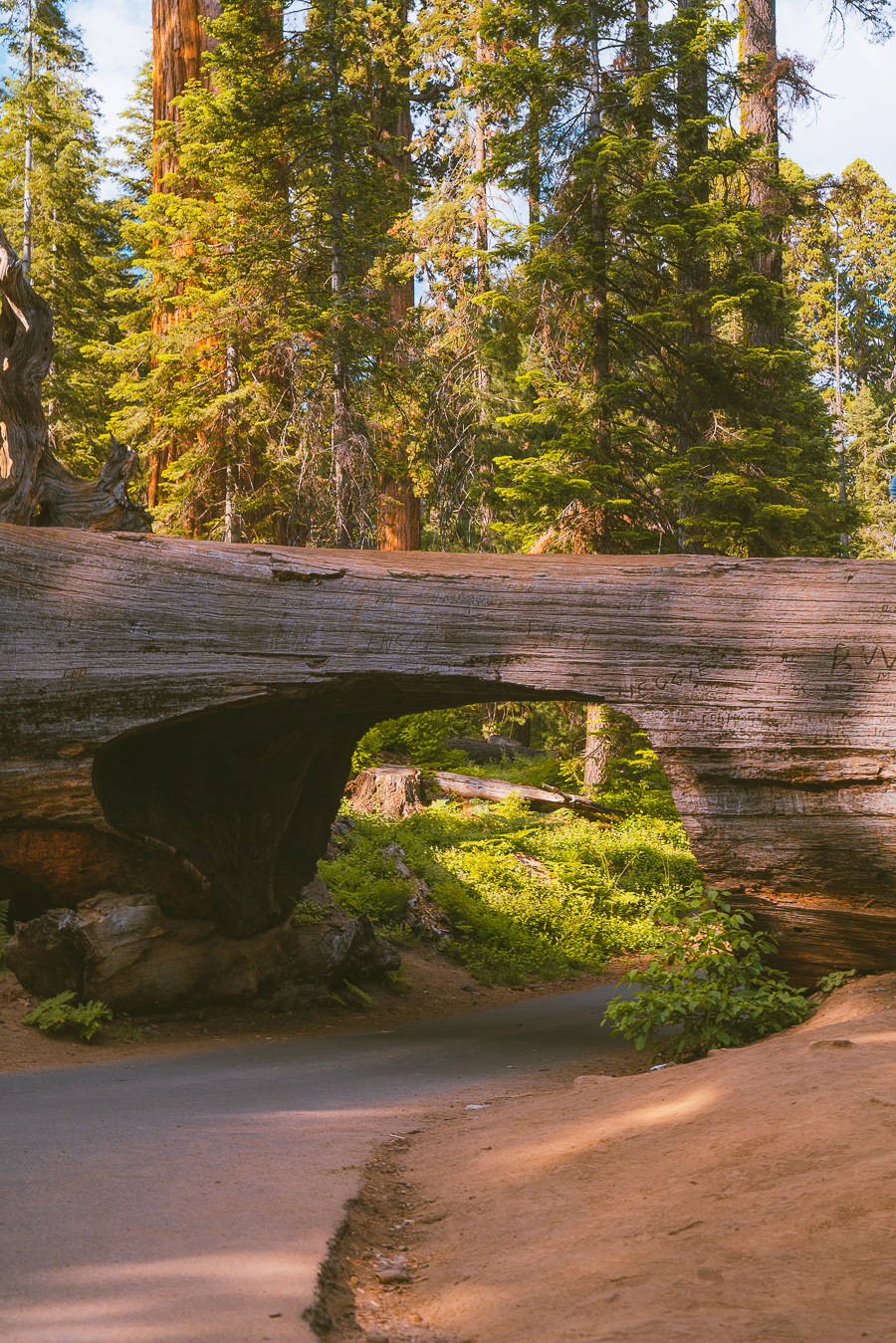
Situated along Crescent Meadow Road in the Giant Forest, the Tunnel Log is an estimated 2,000-year-old sequoia tree that fell over in 1937. The majestic tree once stood roughly 275 feet tall, so it’s understandable that it was repurposed rather than moved.
In 1938, an eight-foot-tall, 17-foot-wide tunnel was carved out of the tree, and it has been a must-see Sequoia National Park attraction since.
Because of its popularity, you can expect to see many other visitors posing on, under, and next to the tunnel. Your best bet is to go early in the morning to avoid any photobombing incidents. You might just capture the tree among some dramatic morning mist.
Be sure to check that your van is less than 8 feet tall. The average mini-van should be able to fit through. If your vehicle is a bit taller, you can take the bypass lane to continue your journey and avoid getting stuck in an ancient tree.
Read More: Things To Do In Visalia, California
Take a Hike Through Crescent Meadow
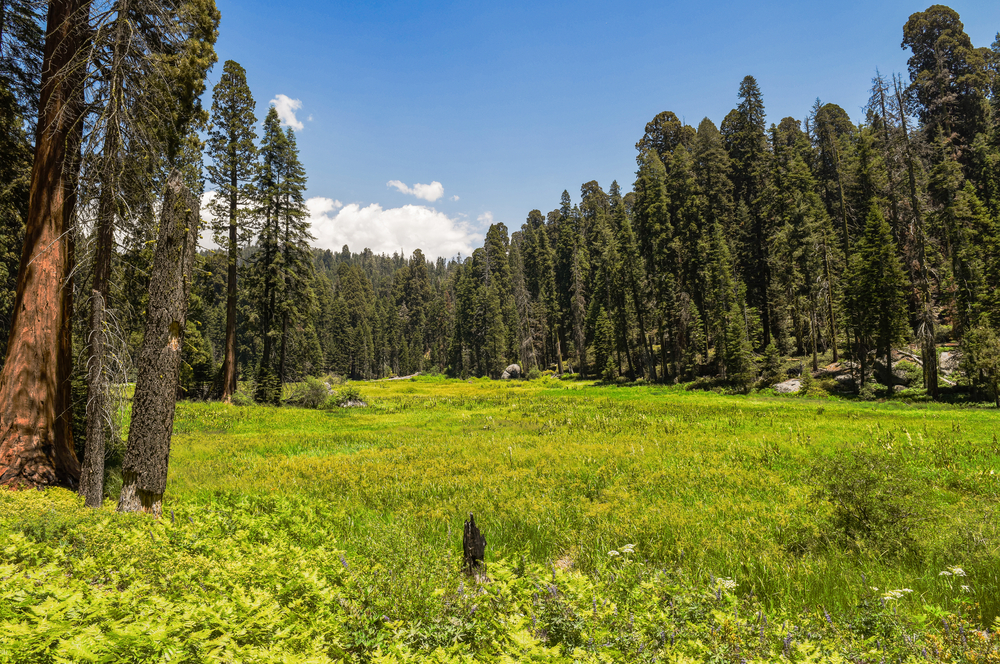
This open green space is a pleasant surprise among the towering sequoia trees. The treeless meadow is awash with color in summer when wildflowers bloom and is a great spot for picnics.
There’s also a leisurely 1.8-mile trail around the meadow that will take you about two hours to complete. This loop trail is great for an easy stroll if you’re not up for the more challenging hikes. But you can also increase the difficulty by joining any of the side trails.
On the Crescent Meadow Loop Trail, you’ll spot the Chimney Tree; a tree hollowed out by fire that you can stand in. One of the side trails, Tharp’s Log loop, leads to a cozy cabin built into a fallen sequoia by Mr. Tharp.
Wildlife also frequent this area, so you might even spot a marmot, deer, or bear during your visit.
Read More: 11 Best Things To Do in Kings Canyon National Park
Visit the Giant Forest Museum
The Giant Forest Museum is the perfect place to visit for history and nature lovers alike. Housed in the historic Giant Forest Market Building built in 1928, the museum offers small exhibits about the big trees surrounding it.
You’ll learn about the difference between sequoias and maple redwoods, the region’s history, and the humans who lived there. You’ll also learn about the ecosystems within the forest and might even walk in on the occasional ranger talk. The museum can be found just off General’s Highway, with a clear sign indicating where to turn in.

Tip: The museum is open year-round between 9 am and 5 pm, and entry is free.
Trek Up Moro Rock + Hanging rocks
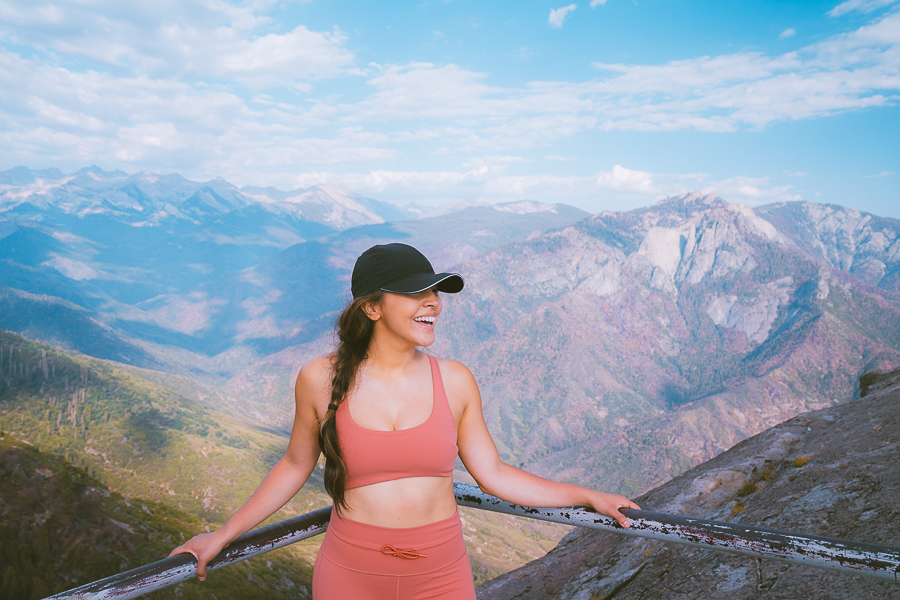
Moro Rock is a spectacular granite dome that offers equally breathtaking views of the Great Western Divide and the western part of the park. You’ll take roughly 350 granite steps up to the top of this rock for sweeping, 360-degree views.
While the views are entirely worth the steep, 0.6-mile trek, this attraction might not be for you if you’re afraid of heights. The path up gets narrow in areas, and some parts of the trail don’t have handrails. But, most of the trail does have rails, including the top of the rock. So if you’re willing to take on this trail, you should be safe.
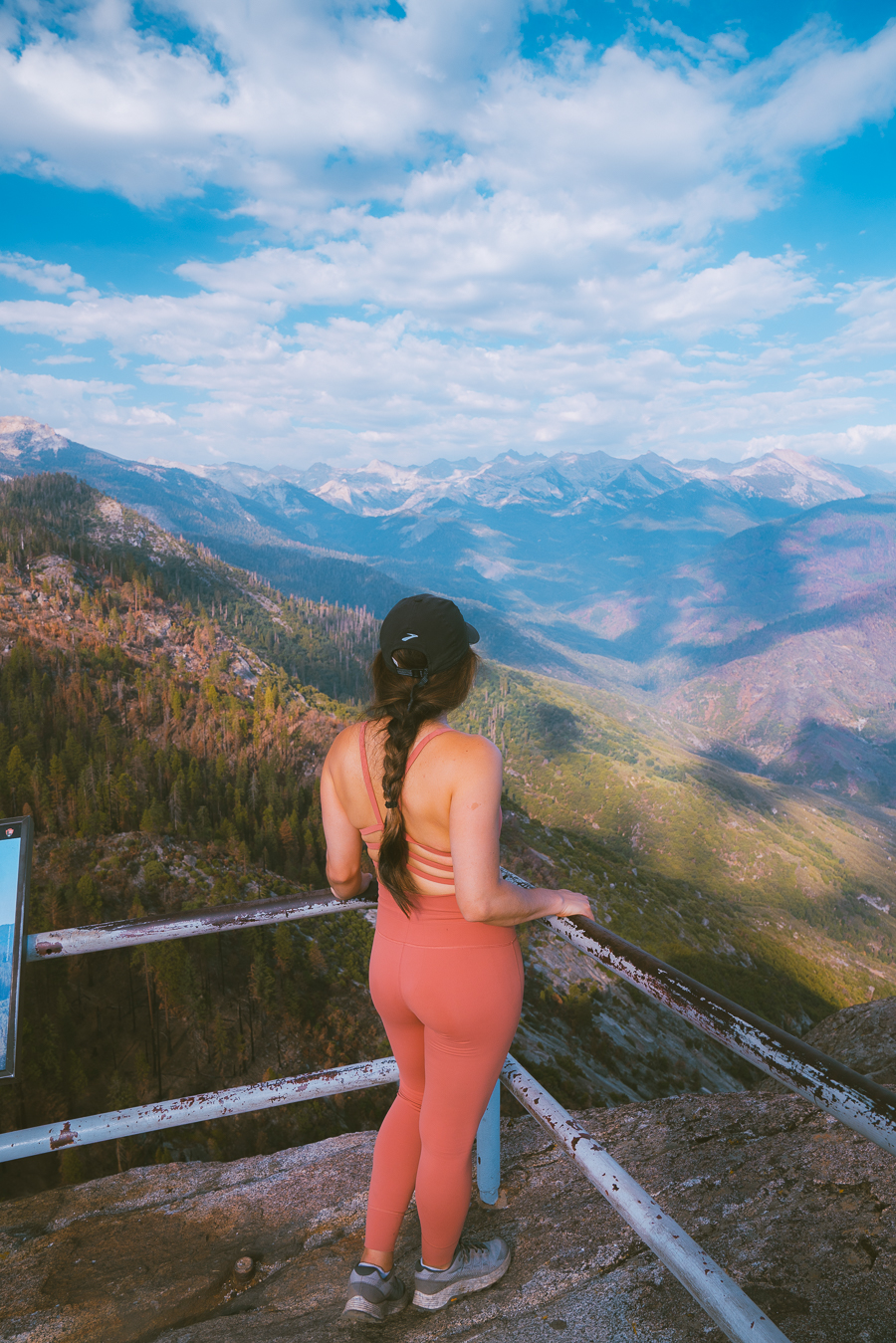
The Moro Rock sits along the General’s Highway on the way to General Sherman. And it’s best reached via the complimentary shuttle running from the Giant Forest Museum. Parking can get quite packed, so the shuttle is a much safer option. For safety, you won’t have access to the rock in wet or snowy weather.
If you’re even more adventurous, Moro Rock is also a popular rock-climbing spot.
Download my free Outdoor Photography Guide
Walk through the Giant Forest
The Giant Forest is the second-largest sequoia grove in the world and is home to over 8,000 sequoias. You’ll feel like you’re the size of an ant among these towering trees that reach into the heavens. And you’ll definitely want to bring your camera along.
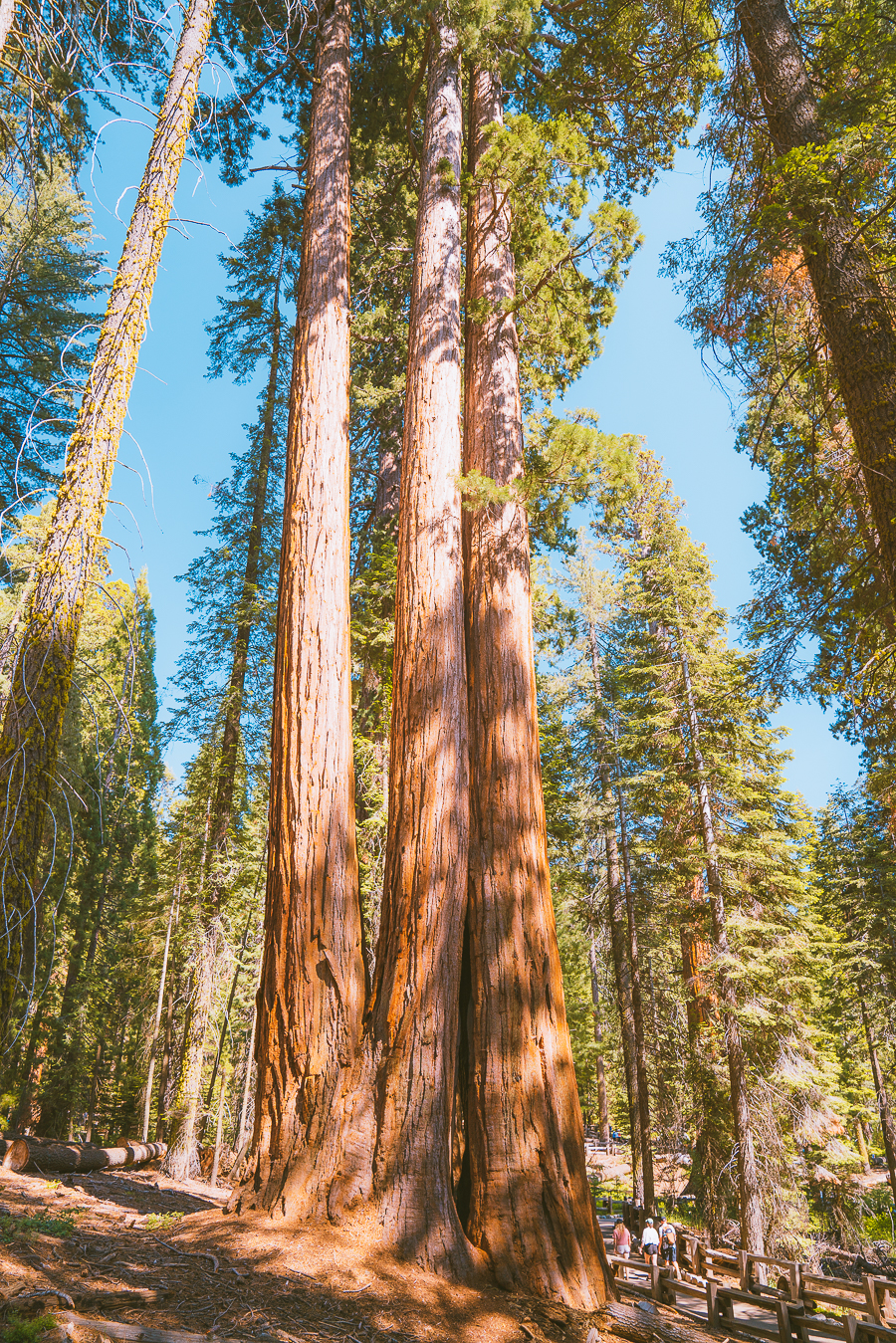
The Giant Forest is home to many must-see trees like the General Sherman tree (more on this later), but it’s also got a few unmissable hiking trails. The shorter Big Trees Trail is a level, 1.3-mile trek on a paved road. And the more popular Congress Trail is a 2-mile hike that’ll take you away from the crowds. This trail kicks off at the General Sherman Tree.
Hike up Mount Whitney
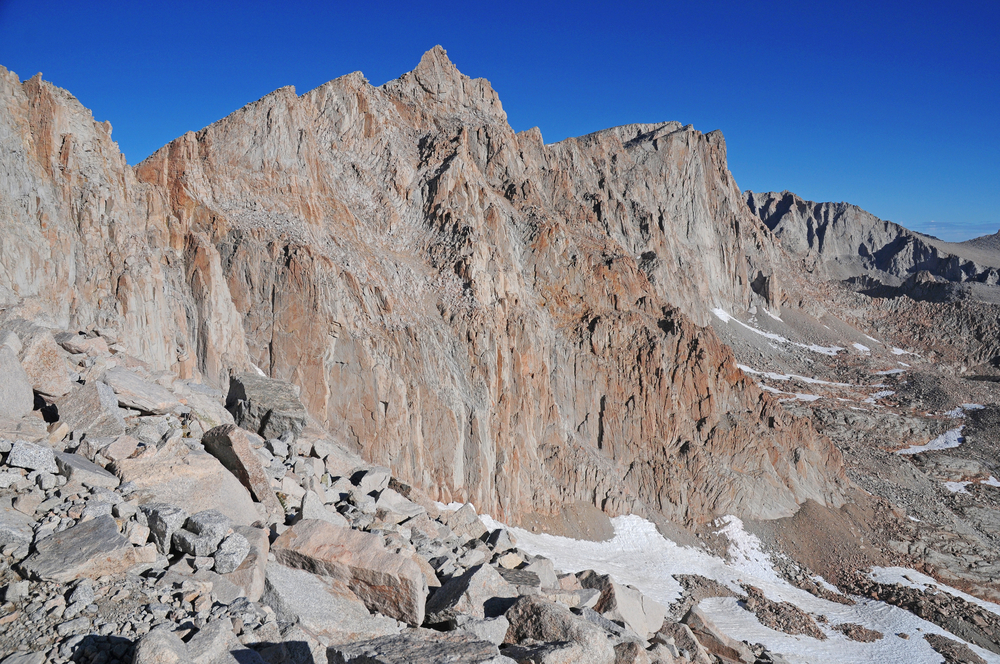
Being the tallest mountain in the contiguous United States, Mount Whitney is not exactly the best place for beginner hikers. But, if you’re an experienced adventurer, Mount Whitney will be a great challenge to take on.
The shorter, 22-mile out-and-back Mount Whitney Trail kicks off at Whitney Portal on the eastern side of the Sierra Nevada. The trail can be completed within a day or extended to a two-day trek to allow for a slower pace.
The longer High Sierra Trail is another popular option, yet less frequented, as the hike is more suited to advanced hikers. You can start the trail at Giants Forest for a 60-mile trek. Or kick off your adventure at Crescent Meadow for a 72-mile hike.
You’ll need to apply for a backcountry permit to overnight in non-designated camping spots and will need about a week to complete the trail. Also, keep in mind that you’ll be taking on over 6,000 feet in elevation, so rest and hydrate regularly.
Trek to the Tokopah Falls
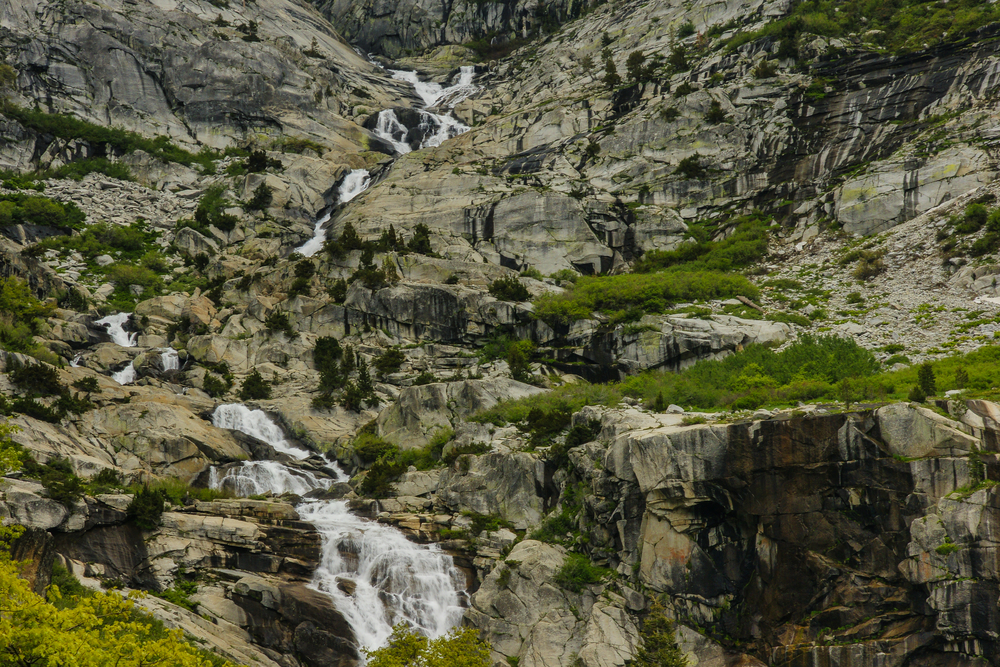
Visit the tallest waterfall in Sequoia National Forest with an easy 4-mile round-trip hike. The 1,200-foot-long roaring river falls are made up of a series of cascades that crash down among craggy granite rocks.
The hike has a gradual 639-foot elevation gain and kicks off at the Lodgepole Camp Ground. You’ll have access to restrooms, water stations, and a picnic area near the trailhead. So consider packing a lunch for your adventure.
The waterfall is at its most breathtaking during spring and early summer when the melting snow finds its way down. During fall and summer, the waterfall is less likely to put up a water show quite as striking.
Read More: Best Hikes in Pinnacles National Park: 10 Thrilling Hiking Trails
Hike the Marble Falls Trail
The Marble Falls are one of the must-sees in Sequoia National Park, and you can reach them on a 7.4-mile round-trip hike. Kicking off at Potwisha Campground, the moderate trail has roughly 1,500 feet gain in elevation and takes about half a day. Your destination is a mesmerizing 70-foot cascade spilling over marble rock into a glittering pool.
The scenic trail involves a few stream crossings and is ideal for the spring or early summer months when melting ice fills the river. In spring, you’ll spot wildflowers along the trail, making it one of the most scenic trails in the park.

Tip: Much of the trail is unshaded, so you’ll want to pack a good sun hat and double up on sunscreen.
Paddle on Hume Lake
This 87-acre lake was built in 1908 as a water supply flume but has since been repurposed as a recreational area. Featuring coves and sandy beaches, this lake is the perfect place to cool off in the summer with a picnic and a swim.
Motorized boats aren’t allowed on the lake, but canoes, kayaks, and rowboats are available for rent. This lake is also home to fish like trout, bass, and bluegill if you’re keen on fishing.
The 2.6-mile Hume Lake Trail offers a scenic trek around the lake. This trail includes a few signs that further delve into the history and ecosystem of the lake. You’ll also find the Hume Lake Campground, a short walk from the lake, and toilets available in select areas.
Grab Your Free Car Camping Checklist! 🚗🌲
Ready to elevate your car camping game? Snag our essential checklist to ensure you’ve got everything you need for a stress-free, fun-filled adventure! Perfect for beginners and seasoned campers alike. Download now and hit the road prepared! 🌟🎒
Admire the Night Sky
Due to its high elevation and low levels of light pollution, Sequoia National Park is a great place to go stargazing. And what better way to frame the milky way than through some ancient giant sequoias?
One of the best times to go stargazing in this park is between July and August to witness the Perseid Meteor Showers. During this spectacle, you’ll spot around 100 shooting stars per hour.
You can also join occasional ranger-led stargazing programs and the annual Dark Sky Festival, usually held around the Giant Forest and Lodgepole areas. Check the park’s website for up-to-date details on upcoming stargazing events.
What to See at Sequoia National Park | Top Sights
Wondering what to see in Sequoia National Park? Have a look at these sights below.
General Sherman Tree
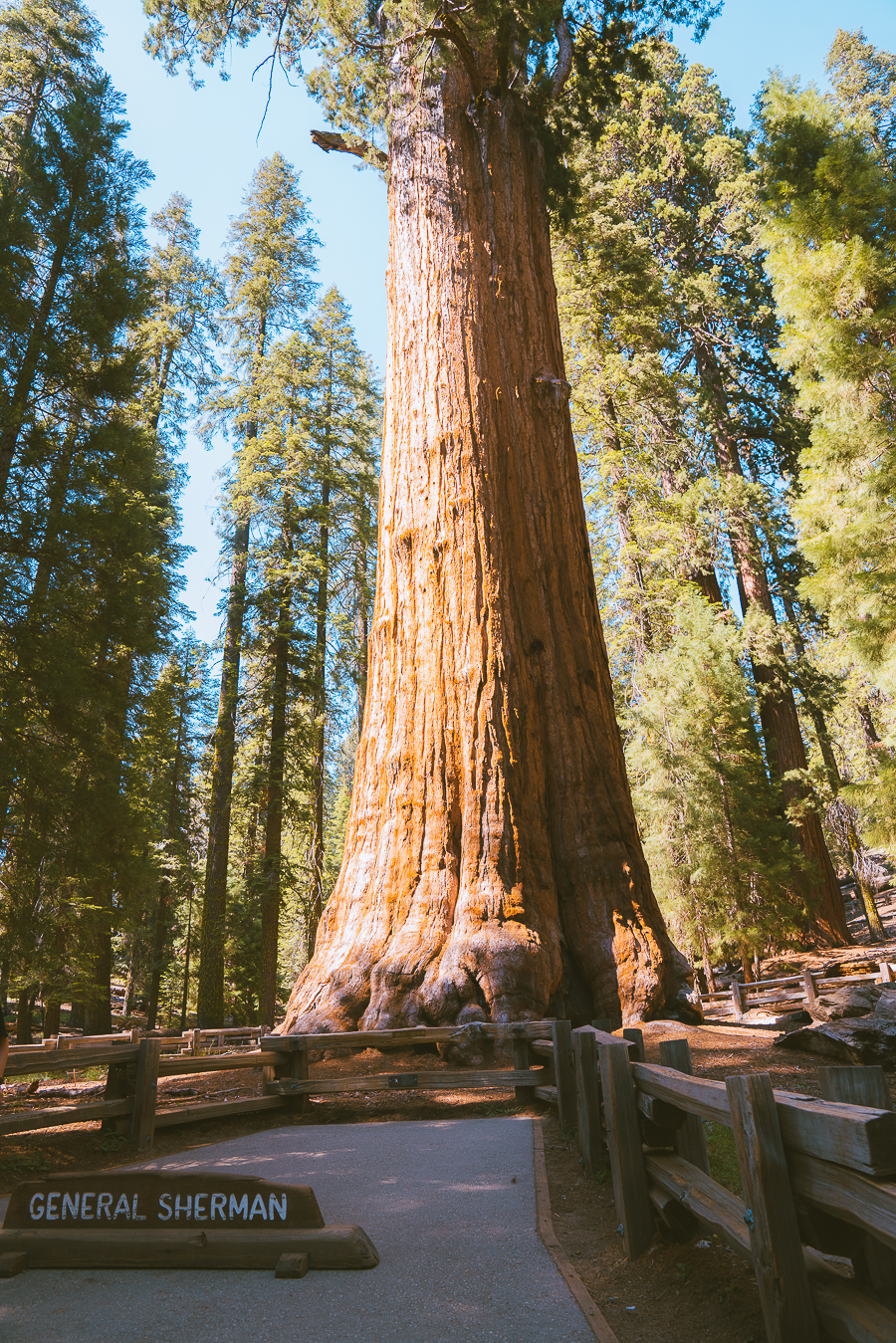
One of the most iconic things to see in Sequoia National Park is the General Sherman Tree. Named after army general William Sherman, this tree is the world’s largest tree by volume. The estimated 2,200-year-old tree towers a staggering 275 feet and has a 36-foot diameter base.
Being the largest tree in the world, it understandably attracts plenty of crowds, especially in summer. So you’ll have to bring your patience along and prepare for a bit of a wait.
Try to arrive early to avoid large crowds, or visit the tree in winter for an even more memorable photo-op. The General Sherman Tree looks strikingly beautiful, with its redwood contrasting the greenery and winter snow.
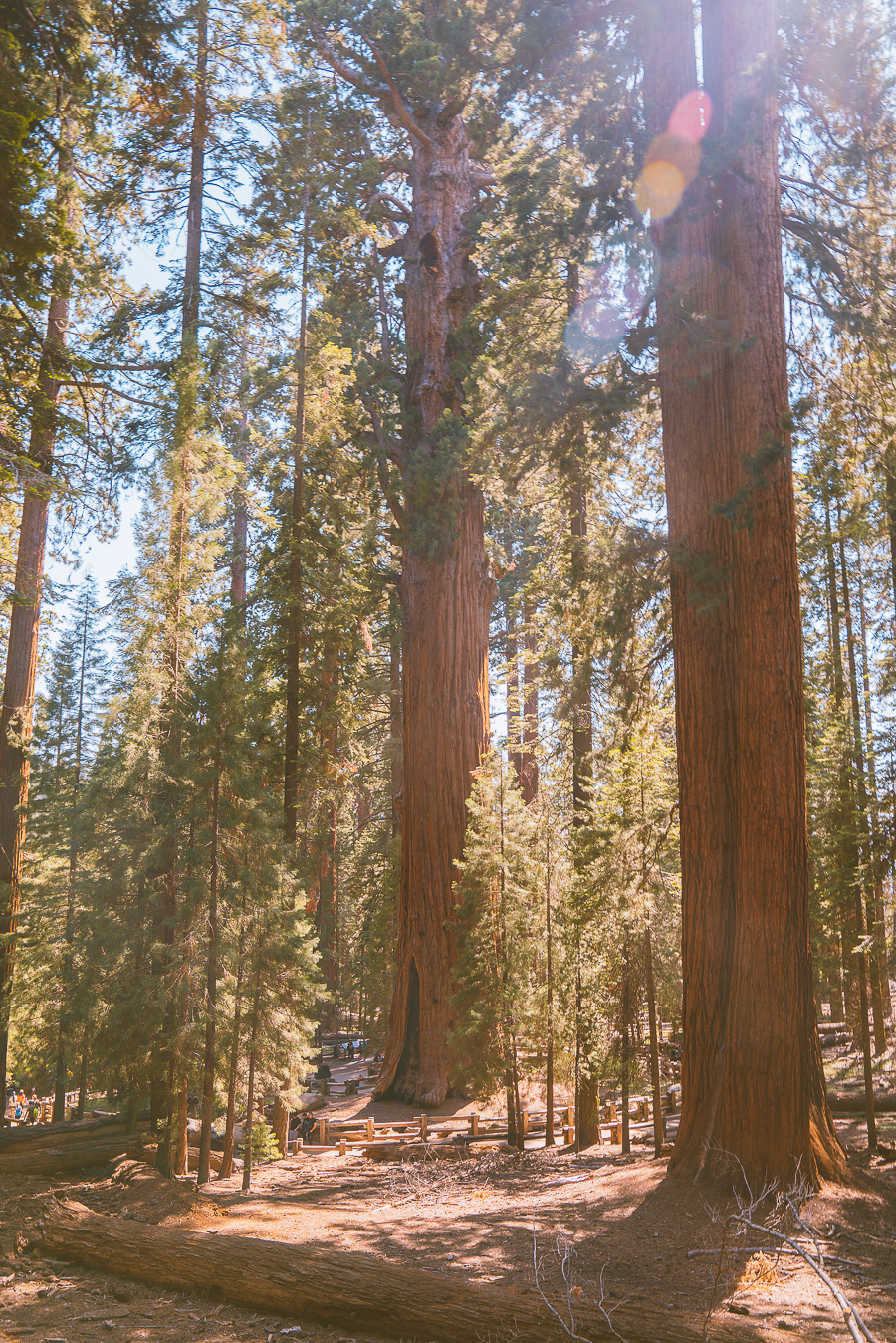
You can access the trail on a quick half-mile walk from the parking lot just off Wolverton Road. The downhill trek is paved and has a few steps. The way back may be a bit of an uphill struggle, but you can opt to continue further down past the tree to a shuttle stop. The shuttle will return you to your parking lot.
If you’d like to wander about a bit more, you can join the 2-mile Congress Trail that starts near the tree.

Tip: A short, wheelchair-accessible path starts at a parking lot on the edge of General’s Highway. The tree is only about 100 yards away from this parking lot.
Crystal Cave
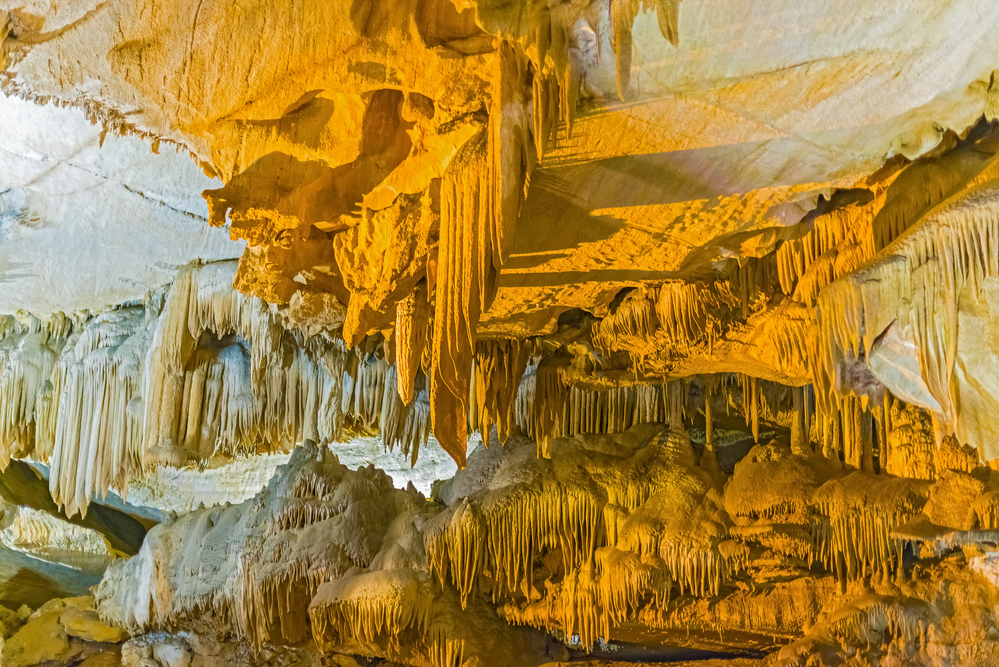
Another must-see in Sequoia National Park is the subterranean Crystal Cave. There are over 200 caves in Sequoia and Kings Canyon National Park, but the Crystal Cave is the only one open to the public.
Take a break from admiring the towering giants and head underground for a spectacular look at the marble cave and its stalactites and stalagmites. You can opt for an easy, half-mile loop through the cavern, which takes less than an hour. Or you can enjoy a half-day tour that involves crawling through tight spaces to more areas of the cave.
Tours are only available during summer, and tickets need to be booked online or purchased at one of the visitor centers. This cave is about a 30-minute drive from the Giant Forest Museum and can be reached by turning off General’s Highway onto the 7-mile Crystal Cave Road.

Tip: The cave can get quite chilly, so bring a light jacket.
Sunset at Beetle Rock
If you’re looking for a less crowded alternative viewpoint to Moro Rock, head to the flat Beetle Rock. This granite dome offers breathtaking vistas of the western end of the park and the San Joaquin Valley. You’ll spot mountain peaks stretching far into the horizon, with towering trees and the occasional smog in the forefront.
This dome is a short walk from the Giant Forest Museum and an even shorter walk from the nearby parking lot. This makes it an excellent spot for a picnic after a hike or viewing the sunset at the end of the day. Or you can kick your day off with an early sunrise viewing.
Remember to bring a headlamp if you plan on a sunrise or sunset visit. And keep your food within arm’s reach, as bears frequent this area.
Parker Group Sequoias
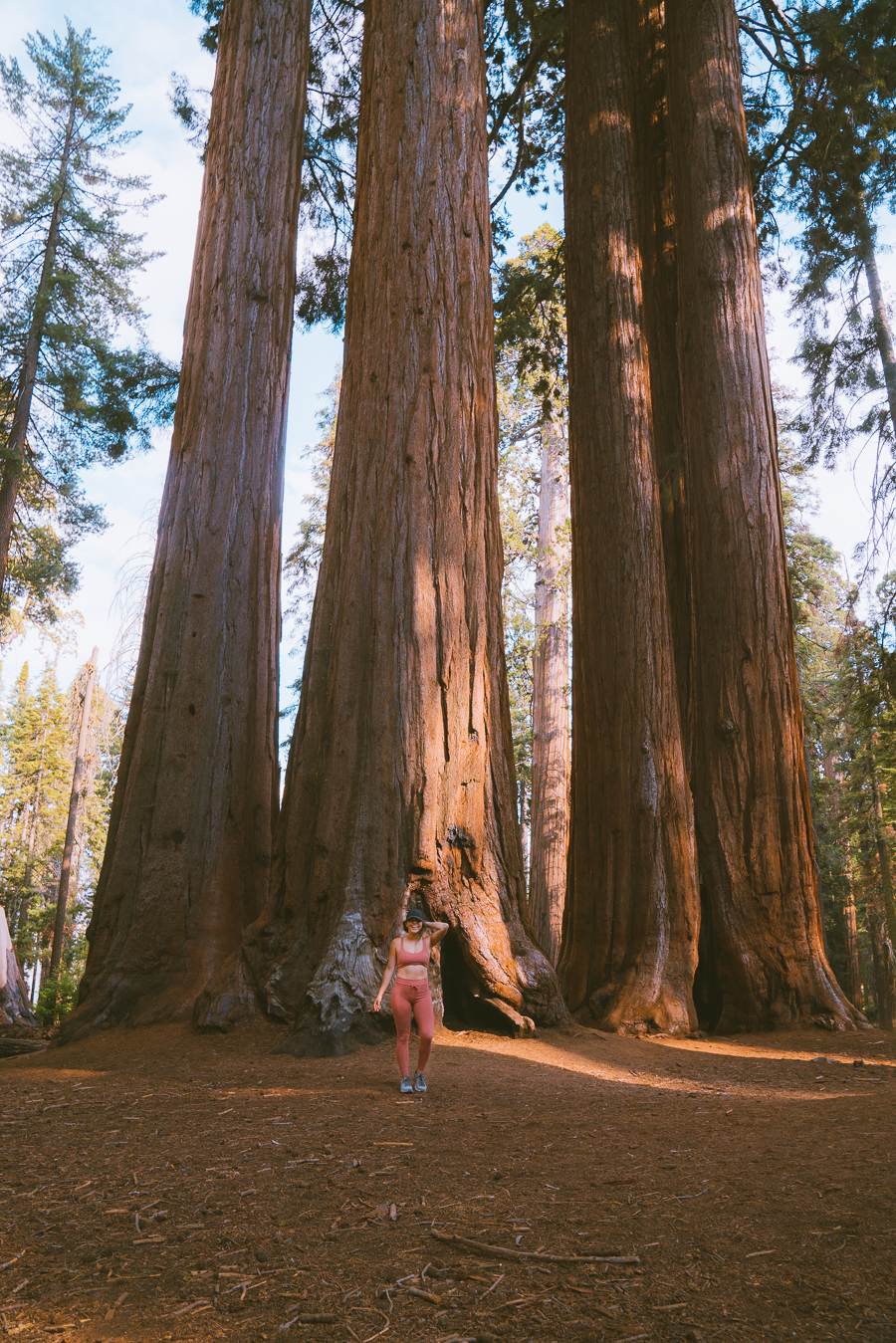
The Parker Group Sequoias are a cluster of towering trees named after the eight family members of Captain James Park. Parker was a cavalryman for the U.S. Army and served as superintendent for the park between 1893 and 1894.
These towering giants are especially notable for how close to each other they are, creating one imposing unit. This spot is a great place to capture some photos, and you’ll find this cluster along Crescent Meadow Road.
Buttress Tree
A fascinating fact about sequoia trees is that, despite them being able to grow to immense sizes, their roots barely grow deeper than 12 feet. Instead, their roots can grow up to 300 feet outward. To anchor themselves, these roots will usually weave into those of other giant sequoias to create a support system.
When sequoias don’t have a sound support system and get exposed to rain, wind, or fire erosion, they can lose their balance and topple. And this seems to be what happened to the Buttress Tree when it fell without warning on 3 June 1959.
The toppled tree sits along Crescent Meadow Road and is another great place to photograph, with its broad base of curly roots.
Buck Rock Lookout
One of the more unique Sequoia National Park attractions is the Buck Rock Lookout point. The lookout features a tiny shack built on an 8,500-foot granite dome in 1923. The shed serves as a watchpoint for fire activity in the park and provides 360-degree views of the Sierra Nevada and San Joaquin Valley.
You’ll have to take 172 metal steps to the top, where you’ll find staff operating the humble shack. Due to its small size, only six people are allowed to visit at a time. And the structure is closed to the public during peak fire season.

Tip: It can get quite windy there, so bring a jacket and hold on to your things.
What to Do in Sequoia National Park | FAQs
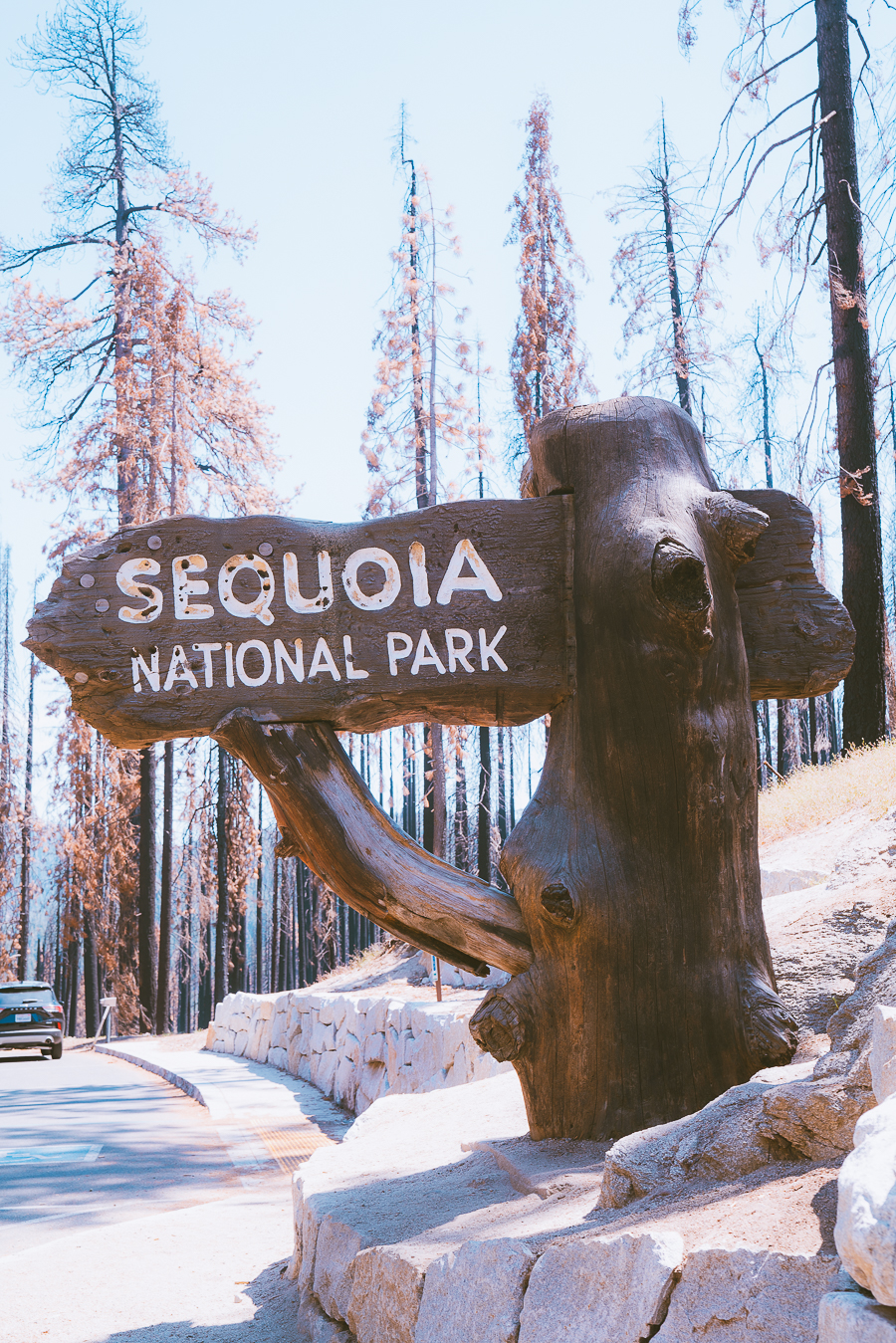
Below are answers to a few frequently asked questions about Sequoia National Park.
What is the Best Time to Visit Sequoia National Park?
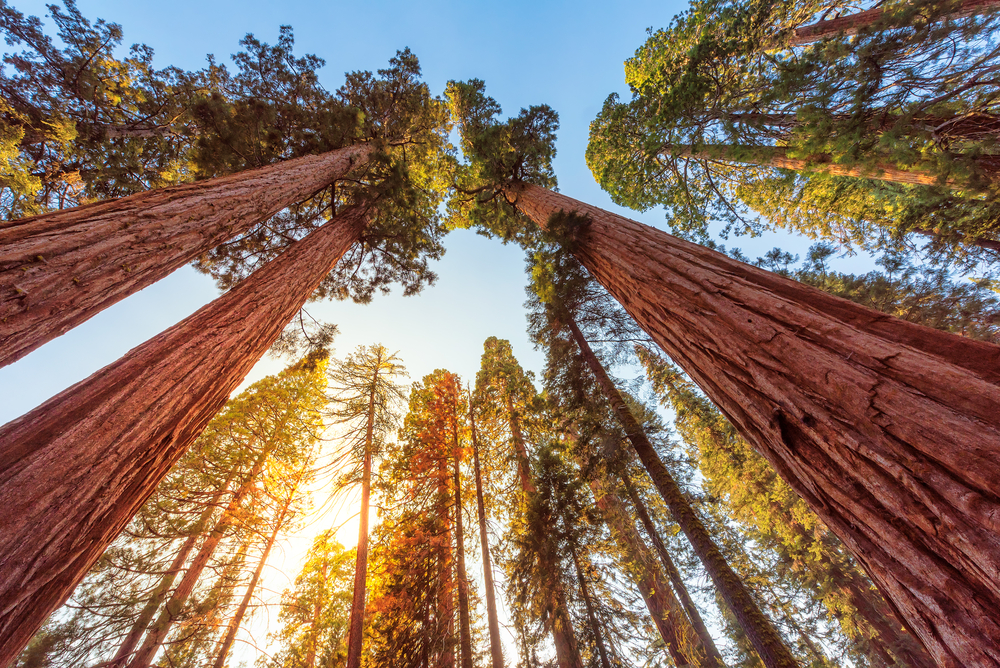
The best time to visit Sequoia National Park is between early fall and late spring when temperatures are milder, and crowds are less.
In spring, waterfalls are more abundant, and you’ll find colorful wildflowers blooming in the park. If you’d really like to avoid crowds, you can visit the park during winter. Although many trails and attractions will be closed, you’ll be able to capture some stunning contrasting photos.
Read More: Best Time To Visit Sequoia National Park
How Long to Visit Sequoia National Park?
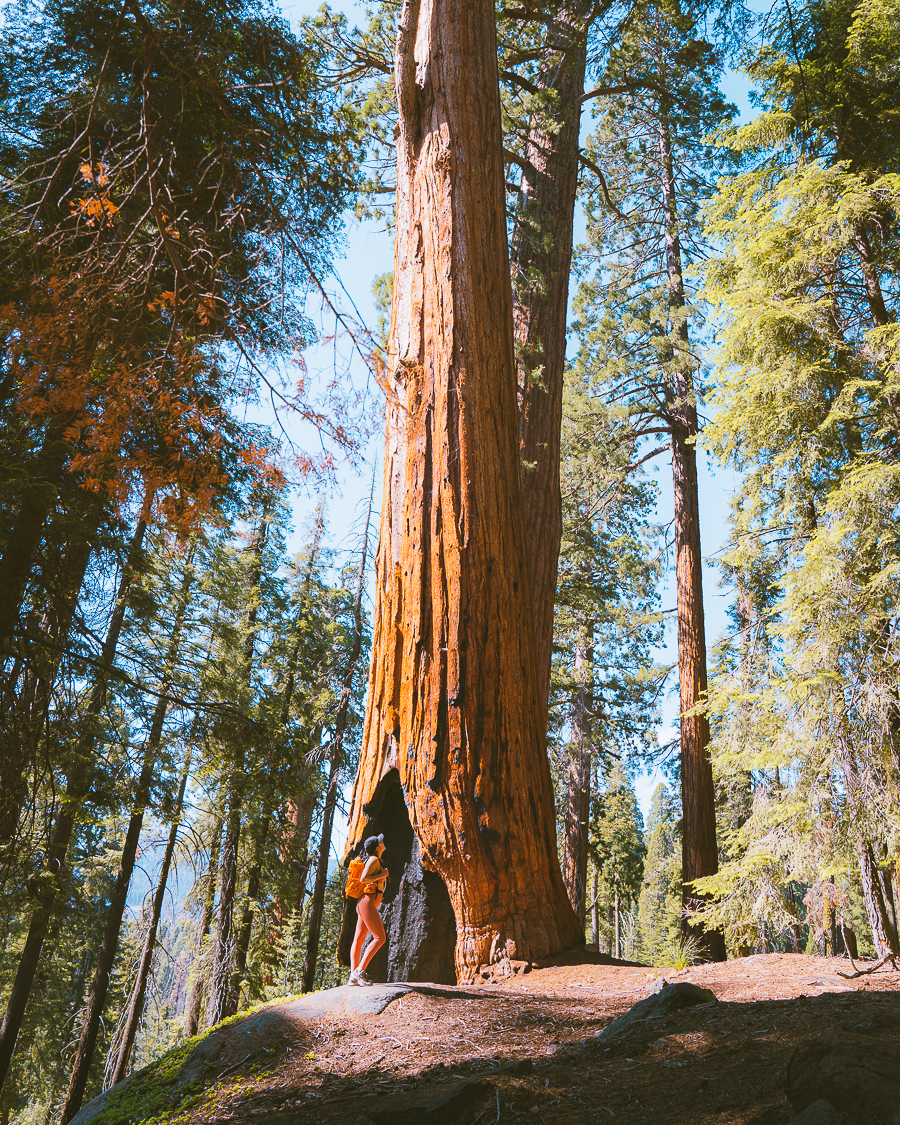
Depending on your planned activities, you can spend between one day to a week in Sequoia National Park. If you’re simply going to see the top sights like the General Sherman Tree and the Tunnel Log, a day will be more than enough.
But, if you’d like to take on multiple-day hikes or explore more of the park, you should plan for 3–7 days.
What Are Sequoia National Park’s Entrance Fees?
Private vehicles and their occupants pay $35, and individuals on foot or bicycle pay $20 for an entry pass valid for seven days. This pass grants you access to Sequoia National Park and Kings Canyon.
You can save money by buying an America the Beautiful Pass instead. This $80 annual pass grants you a year’s access to all U.S. National Parks. You can book your preferred pass online or pay at the entrance. Cards and cash are accepted.
How Old is the General Sherman Tree?
The General Sherman tree is estimated to be around 2,200–2,700 years old.
Final Thoughts on Things to Do: Sequoia National Park
As you can tell, this park is packed with fun activities for all fitness levels and ages. It’s one of the most beautiful places to capture, so don’t forget your best hiking camera gear.
If you’d like to explore more of California’s natural beauty, don’t miss glamping in Joshua Tree, beautiful Palm Springs, and all the fun activities in Mammoth Lakes.

